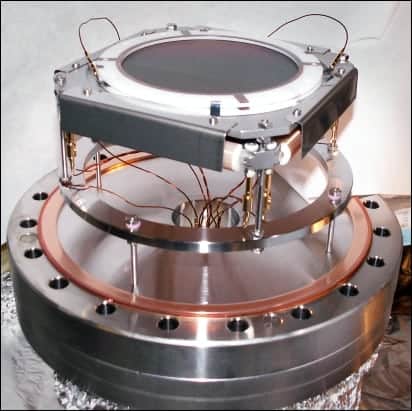The saga of the Hanbury Brown–Twiss (HBT) effect traces back to the mid-20th century, wherein it was originally employed to demonstrate the phenomenon of intensity correlations in photon states emitted from thermal sources. This classical quantum optics experiment remains a cornerstone for our understanding of quantum mechanics and light-matter interactions. Nonetheless, recent advancements have unwrapped the potential for novel interpretations and applications of the HBT effect, emphasizing the timeless nature of quantum weirdness. This discourse elucidates the multifaceted implications of a renewed exploration into the HBT effect, driving curiosity within the scientific community and beyond.
At the heart of the HBT experiment lies the observation that photons emitted from an unpolarized source exhibit correlations in arrival times when observed across a beam splitter. This phenomenon can be explained through the principles of wave-particle duality, wherein the inherent indistinguishability of identical particles plays a pivotal role. The HBT effect provides a vivid illustration of quantum statistics, distinguishing between classical stochastic emissions and the intricacies of quantum mechanics. Its ramifications extend into the realms of astrophysics, quantum optics, and even the burgeoning field of quantum information science.
Recent inquiries have ventured into reimagining the HBT effect through novel configurations and experimental paradigms. The emergence of advanced photonic technologies, such as single-photon sources and on-chip quantum circuits, facilitates a reevaluation of the traditional HBT setup. Techniques like time-resolved measurements and entangled photon pairs enable researchers to probe deeper into the physics governing photon behavior. These experimental advancements yield unprecedented data sets, allowing for an intricate analysis of quantum interference phenomena, all the while promising revolutionary applications in quantum communication and cryptography.
One particularly fascinating twist involves the exploration of nonclassical light fields, such as squeezed states of light. Squeezed states, whereby the quantum uncertainty in one quadrature is reduced at the expense of increased uncertainty in another, present unique opportunities for enhancing the HBT effect. Their potential for exhibition of sub-Poissonian statistics heralds applications in precision measurement and surpassing the standard quantum limit in various domains. This radical departure from classical thermal sources signifies a paradigm shift, demonstrating that the HBT effect can be leveraged to elucidate deeper principles of quantum mechanics rather than serve merely as a historical anecdote.
Moreover, the implications of various quantum statistical distributions—such as Fermi-Dirac and Bose-Einstein statistics—have been reconceived through the lens of the HBT effect. By utilizing sophisticated detection schemes and theoretical models, researchers can disentangle the complexities of particle identity, delving into the thermodynamic behavior of many-body systems. This exploration accentuates the importance of quantum statistics in modern physics and invites a thorough reevaluation of established paradigms.
A burgeoning area of investigation bridges the concepts of the HBT effect with recent work in quantum entanglement and nonlocality. The recent establishment of spatially separated entangled photon pairs provides fertile ground for the scrutiny of correlations that transcend classical limitations. The findings beg questions surrounding the implications of entanglement and information transfer, reshaping our understanding of locality and causality in quantum mechanics. This nexus between the HBT effect and entangled states enriches our conceptual toolkit, fostering curiosity about the interplay between seemingly disparate domains.
With the mounting complexity of experimental methodologies, the HBT effect now serves as a catalyst for numerous interdisciplinary explorations. The potential for applications in quantum imaging is particularly noteworthy. Quantum-enhanced metrology often relies on the foundational principles underlying the HBT effect, offering significant improvements over classical approaches. Researchers are now harnessing correlations of quantum light to optimize sensor designs utilized in fields ranging from biological imaging to gravitational wave detection. Such advancements invoke a perceptual departure from classical measurement techniques, entwining our future technological advancements with the rich tapestry of quantum effects.
Additionally, the ramifications of a deeper understanding of the HBT effect transcend the boundaries of physics, sparking dialogues within philosophy and the foundational questions of reality itself. This intersection underscores the enigmatic nature of quantum mechanics, which oscillates between determinism and stochasticity, compelling scientists and philosophers alike to ponder the essence of existence through the lens of quantum phenomena. As such, the resurgence of interest in the HBT effect emboldens a renaissance of inquiry, extending an invitation to grapple with the profound mysteries that lie within the quantum realm.
The synthesis of these advancements presents a tapestry woven with complex strands of theoretical elucidation, experimental ingenuity, and philosophical contemplation. Future explorations will likely yield unforeseen revelations, further expanding the horizons of our understanding. Consequently, the ongoing study of the Hanbury Brown–Twiss effect serves not merely as a pursuit of knowledge but as an adventurous journey through the arcana of quantum reality. Beyond its historical significance, the HBT effect now forms a vibrant nucleus around which the discussions of quantum mechanics continue to unfold, invoking curiosity and inspiring novel discoveries.
Ultimately, the return to the Hanbury Brown-Twiss effect encapsulates a timeless truth: that within the bizarre tapestry of quantum mechanics, curiosity shall invariably guide the way. The quest for understanding—in its myriad forms—promises to refine our grasp of nature’s underpinnings, continually inviting scrutiny and wonder at the quantum weirdness that defines our universe.












